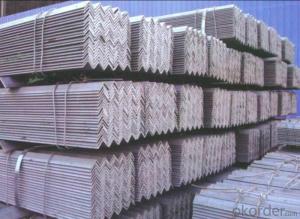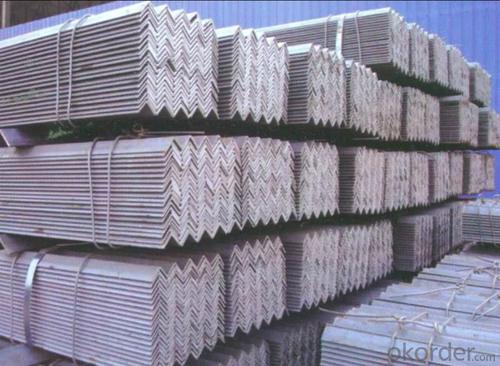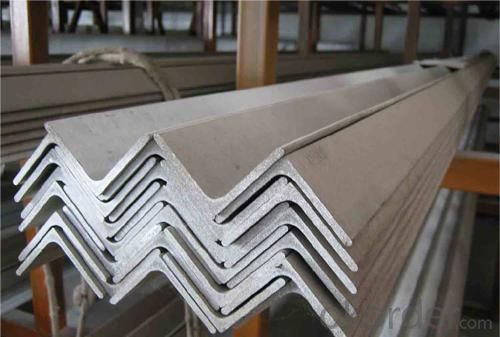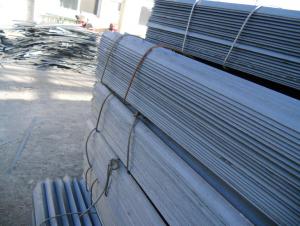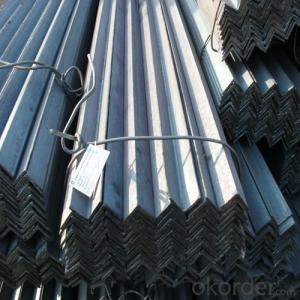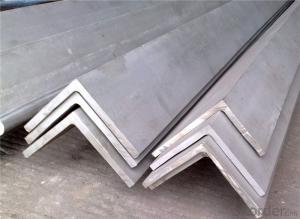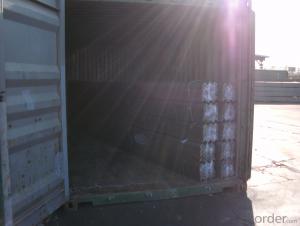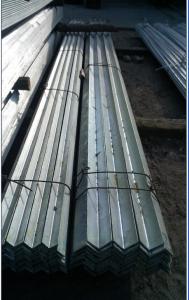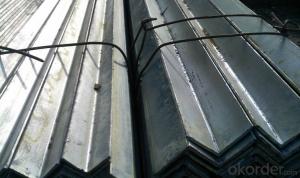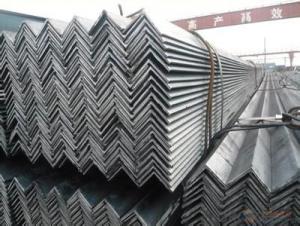HOT ROLLED SHEET EQUAL ANGLE for construction GB Q235B
- Loading Port:
- Tianjin
- Payment Terms:
- TT or LC
- Min Order Qty:
- 25 m.t.
- Supply Capability:
- 100000 m.t./month
OKorder Service Pledge
OKorder Financial Service
You Might Also Like
Product Description:
OKorder is offering hot rolled sheet equal angle for construction GB Q235Bat great prices with worldwide shipping. Our supplier is a world-class manufacturer of steel, with our products utilized the world over. OKorder annually supplies products to European, North American and Asian markets. We provide quotations within 24 hours of receiving an inquiry and guarantee competitive prices.
Product Applications:
Hot rolled sheet equal angle are ideal for structural applications and are widely used in the construction of buildings and bridges, and the manufacturing, petrochemical, and transportation industries.
Product Advantages:
OKorder's sheet equal angle are durable, strong, and resist corrosion.
Main Product Features:
· Premium quality
· Prompt delivery & seaworthy packing (30 days after receiving deposit)
· Corrosion resistance
· Can be recycled and reused
· Mill test certification
· Professional Service
· Competitive pricing
Product Specifications:
1.Standards:GB,ASTM,BS,AISI,DIN,JIS
2.Invoicing on theoretical weight or actual weight as customer request
3.Material: JIS G3192,SS400;SS540.
4. Payment terms:
1).100% irrevocable L/C at sight.
2).30% T/T prepaid and the balance against the copy of B/L.
3).30% T/T prepaid and the balance against L/C
5.Sizes:
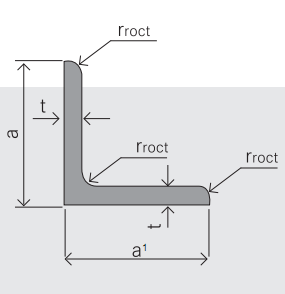
EQUAL ANGLES SIZES |
| ||
a(mm) | a1(mm) | thickness(mm) | length |
25 | 25 | 2.5---3.0 | 6M/12M |
30 | 30 | 2.5---4.0 | 6M/12M |
38 | 38 | 2.5 | 6M/12M |
38 | 38 | 3.0---5.0 | 6M/12M |
40 | 40 | 3.0---6.0 | 6M/12M |
50 | 50 | 3 | 6M/12M |
50 | 50 | 3.7---6.0 | 6M/9M/12M |
60 | 60 | 5.0---6.0 | 6M/9M/12M |
63 | 63 | 6.0---8.0 | 6M/9M/12M |
65 | 65 | 5.0---8.0 | 6M/9M/12M |
70 | 70 | 6.0---7.0 | 6M/9M/12M |
75 | 75 | 5.0---10.0 | 6M/9M/12M |
80 | 80 | 6.0---10.0 | 6M/9M/12M |
90 | 90 | 6.0---10.0 | 6M/9M/12M |
100 | 100 | 6.0---12.0 | 6M/9M/12M |
120 | 120 | 8.0-12.0 | 6M/9M/12M |
125 | 125 | 8.0---12.0 | 6M/9M/12M |
130 | 130 | 9.0-12.0 | 6M/9M/12M |
140 | 140 | 10.0-16.0 | 6M/9M/12M |
150 | 150 | 10---15 | 6M/9M/12M |
160 | 160 | 10---16 | 6M/9M/12M |
180 | 180 | 12---18 | 6M/9M/12M |
200 | 200 | 14---20 | 6M/9M/12M |
5. Material Specifications:
Grade | Yield Strength,N/mm² | Extension Strength N/mm² | |||
Thickness of Steel,mm | |||||
≦16 | >16-≦40 | >40-≦100 | >100 | ||
SS330 | ≧205 | ≧195 | ≧175 | ≧165 | 330-430 |
SS400 | ≧245 | ≧235 | ≧215 | ≧205 | 400-510 |
SS490 | ≧285 | ≧275 | ≧255 | ≧245 | 490-610 |
SS540 | ≧400 | ≧390 | - | - | ≧540 |
FAQ:
Q1: What makes stainless steel stainless?
A1: Stainless steel must contain at least 10.5 % chromium. It is this element that reacts with the oxygen in the air to form a complex chrome-oxide surface layer that is invisible but strong enough to prevent further oxygen from "staining" (rusting) the surface. Higher levels of chromium and the addition of other alloying elements such as nickel and molybdenum enhance this surface layer and improve the corrosion resistance of the stainless material.
Q2: Why buy Materials & Equipment from OKorder.com?
A2: All products offered byOKorder.com are carefully selected from China's most reliable manufacturing enterprises. Through its ISO certifications, OKorder.com adheres to the highest standards and a commitment to supply chain safety and customer satisfaction.
Images:
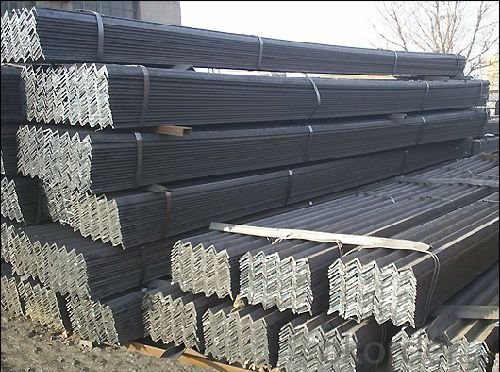
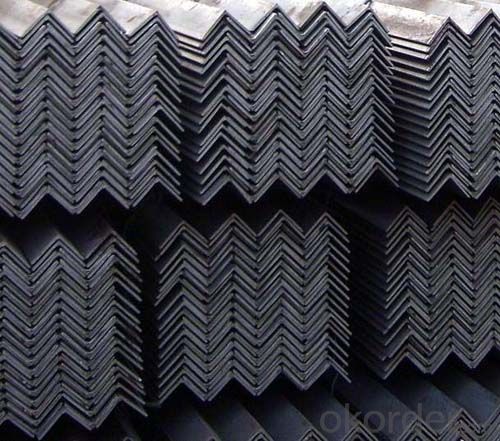
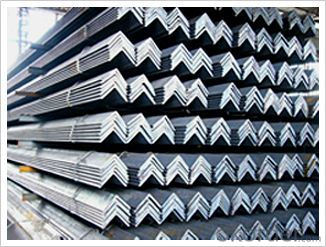
- Q: Can steel angles be used in playground equipment?
- Yes, steel angles can be used in playground equipment. Steel angles are commonly used in the construction industry due to their strength, durability, and versatility. They can be used to provide structural support and stability to various playground equipment such as slides, climbing structures, swings, and playsets. The steel angles can be welded or bolted together to create a sturdy framework that can withstand the weight and movement of children playing. Additionally, steel angles can be coated or painted to provide protection against corrosion and enhance the aesthetic appeal of the playground equipment.
- Q: What is the minimum thickness for a steel angle beam?
- The minimum thickness for a steel angle beam would depend on various factors, including the specific load requirements and design specifications. It is essential to consult engineering guidelines and structural design codes to determine the appropriate minimum thickness for a steel angle beam in a given application.
- Q: Are steel angles suitable for earthquake-resistant construction?
- Steel angles can indeed be suitable for earthquake-resistant construction. Steel is a material known for its high strength and ductility, making it ideal for withstanding seismic forces. Steel angles, in particular, are commonly used in seismic design and construction due to their ability to provide structural stability. Steel angles are often used as bracing elements in buildings to resist lateral forces caused by earthquakes. They can be installed diagonally between structural members to create a rigid frame that can effectively absorb and dissipate seismic energy. These angles help distribute the forces generated during an earthquake and prevent the collapse of the structure. Furthermore, steel angles can be designed and fabricated to meet specific seismic design criteria. The design can take into account factors such as the building's location, expected seismic activity, and the desired level of earthquake resistance. By using advanced computer-aided design and analysis tools, engineers can optimize the placement and size of steel angles to enhance the overall seismic performance of the structure. In addition to their strength and ductility, steel angles offer other advantages for earthquake-resistant construction. They are lightweight, which reduces the overall weight of the structure and allows for more efficient seismic design. Steel is also a recyclable material, making it a sustainable choice for construction projects. However, it is important to note that the suitability of steel angles for earthquake-resistant construction depends on several factors, including the specific design, construction techniques, and adherence to building codes and regulations. Professional engineering expertise and thorough analysis are necessary to ensure the appropriate use of steel angles in seismic design. In summary, steel angles are suitable for earthquake-resistant construction due to their strength, ductility, and ability to provide structural stability. When properly designed and installed, they can effectively resist seismic forces and contribute to the overall safety and resilience of the structure.
- Q: What are the common uses for steel angles?
- Steel angles are commonly used in construction and engineering projects for various purposes such as providing structural support, bracing or reinforcing structures, framing walls and ceilings, creating edges or corners, and forming joints and connections between different components.
- Q: Can steel angles be used for framing windows and doors?
- Absolutely! Framing windows and doors with steel angles is a fantastic option. In construction, these angles are widely favored due to their exceptional strength and durability. They establish a robust structure, guaranteeing ample support and stability for windows and doors. Moreover, steel angles possess remarkable resistance against warping, shrinking, and rotting, making them the perfect choice for any framing requirement.
- Q: What are the common surface treatments for steel angles?
- Different surface treatments are available for steel angles, depending on the desired application and level of corrosion resistance needed. Some commonly used surface treatments are: 1. Hot-dip galvanizing: To achieve excellent corrosion resistance, steel angles are submerged in molten zinc, which creates a protective layer on the surface. This treatment is commonly used for outdoor applications. 2. Powder coating: A dry powder is applied to the steel angles and then heated to form a durable and decorative coating. Powder coating provides good corrosion resistance and can be used indoors or outdoors. 3. Painting: Painting is a versatile and cost-effective option for treating steel angles. First, a rust-inhibiting primer is applied, followed by a suitable topcoat. While paint provides a decorative finish and some corrosion resistance, it may not be as long-lasting as other treatments. 4. Electroplating: This process involves depositing a thin layer of metal, like zinc or chrome, onto the steel angles using an electric current. Electroplating offers both corrosion resistance and aesthetic appeal, making it suitable for various applications. 5. Anodizing: Although primarily used for aluminum, anodizing can also be applied to steel angles. It involves creating an oxide layer on the metal surface, which enhances corrosion resistance and durability. Anodizing can also provide a decorative finish and is commonly used in architectural applications. It's important to consider factors such as the intended use, budget, and environmental conditions when selecting a surface treatment for steel angles. Seeking guidance from professionals or experts in the field can help determine the most suitable treatment for a specific application.
- Q: Can steel angles be used in electrical or telecommunications applications?
- Yes, steel angles can be used in electrical or telecommunications applications. Steel angles are commonly used as structural supports in various industries, including electrical and telecommunications, due to their strength and durability. They can be used to mount electrical or telecommunications equipment, provide support for cable trays or conduits, and form the framework for equipment racks or cabinets.
- Q: Can steel angles be used for manufacturing machinery?
- Indeed, the utilization of steel angles is viable for the production of machinery. In the construction sector, steel angles are frequently employed as structural elements owing to their robustness, resilience, and cost-effectiveness. In the realm of machinery manufacturing, steel angles find utility in a multitude of ways, encompassing framing, support structures, brackets, and mounting components. They bestow stability and rigidity upon the machinery, thereby ensuring its structural integrity. Moreover, steel angles facilitate the welding, bolting, or riveting processes with ease, permitting flexible and efficient fabrication techniques. By and large, steel angles represent a versatile and dependable choice for the manufacturing of machinery.
- Q: What are the maintenance requirements for steel angles?
- The maintenance requirements for steel angles typically involve regular cleaning and inspection for signs of corrosion or damage. It is important to remove any dirt or debris that may accumulate on the surface of the steel angles, as they can potentially lead to corrosion. Additionally, it is advisable to apply a protective coating or paint to prevent rusting. Routine inspections should be conducted to identify any signs of wear or structural issues that may require repairs or replacements.
- Q: What are the different types of connections used for steel angles in residential applications?
- In residential applications, steel angles can be connected using various types of connections. Some commonly used ones are: 1. Welded connections: The angle is welded to nearby structural members like beams or columns. Welded connections offer great strength and rigidity, making them ideal for residential purposes. 2. Bolted connections: Bolts and nuts are used to secure the steel angle to adjacent members. This type of connection is suitable when the angle needs to be easily removable or adjustable. Bolted connections are less rigid than welded ones but still provide sufficient strength for residential use. 3. Clip connections: Clips or brackets are attached to the angle, which is then fastened to wood or non-steel materials using screws or nails. Clip connections are commonly used in residential framing. 4. Gusset plate connections: When two steel angles need to be joined, a flat steel plate known as a gusset plate is welded or bolted to the angles for added support and rigidity. This connection type is often found in residential roof trusses and other structural applications. 5. Cleat connections: A steel plate called a cleat is either bolted or welded to the steel angle and the adjacent member. Cleat connections are frequently used when the angle needs to be attached to a horizontal member like a floor or roof joist. These examples showcase the different connection types employed for steel angles in residential applications. The choice of connection will depend on factors such as structural requirements, ease of installation, and the materials being connected.
Send your message to us
HOT ROLLED SHEET EQUAL ANGLE for construction GB Q235B
- Loading Port:
- Tianjin
- Payment Terms:
- TT or LC
- Min Order Qty:
- 25 m.t.
- Supply Capability:
- 100000 m.t./month
OKorder Service Pledge
OKorder Financial Service
Similar products
Hot products
Hot Searches
Related keywords
